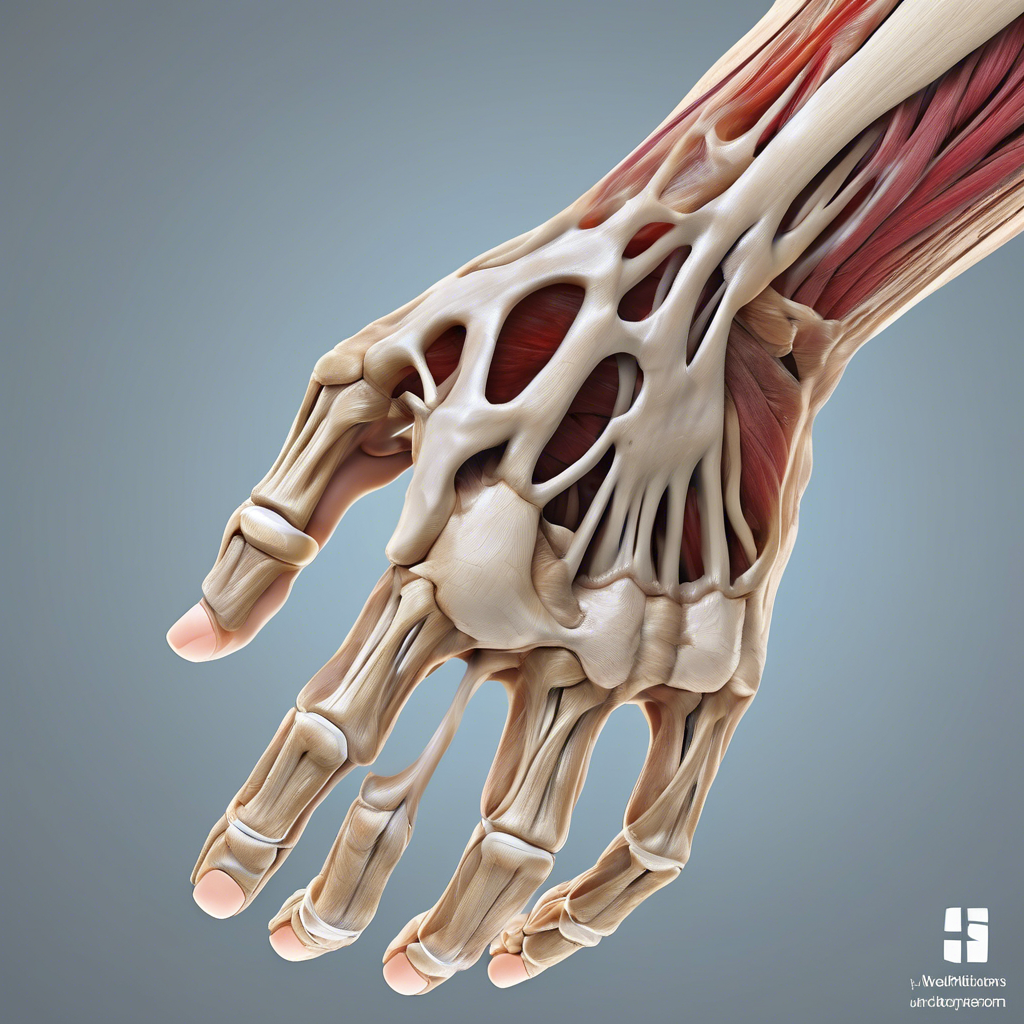The carpal tunnel is a narrow passageway on the palmar side of the wrist, formed by bones and ligaments. It allows for the median nerve and tendons to pass through and facilitate movement and sensation in the hand. The carpal tunnel is bounded by the carpal bones on the dorsal side and the transverse carpal ligament on the volar side. This structure is crucial for the proper functioning of the hand, as it protects the median nerve and tendons that control thumb movement, as well as sensation in the thumb, index, middle finger, and half of the ring finger.
Anatomical Composition
The carpal tunnel is composed of the following anatomical structures:
- Carpal bones: These bones form the dorsal boundary of the carpal tunnel and include the scaphoid, lunate, triquetrum, pisiform, trapezium, trapezoid, capitate, and hamate bones.
- Transverse carpal ligament: This ligament forms the volar boundary of the carpal tunnel and is a thick band of fibrous tissue that connects the carpal bones.
- Median nerve: This nerve passes through the carpal tunnel and provides sensation to the palmar surface of the thumb, index, middle finger, and half of the ring finger.
- Tendons: The tendons of the flexor pollicis longus, flexor digitorum profundus, and flexor digitorum superficialis muscles also pass through the carpal tunnel and facilitate movement of the fingers and thumb.
Clinical Significance
The carpal tunnel is a common site for compression or injury to the median nerve, which can result in numbness, tingling, and weakness in the hand. This condition, known as carpal tunnel syndrome, can be caused by repetitive strain, trauma, or other factors that put pressure on the median nerve. Symptoms of carpal tunnel syndrome may include:
- Numbness or tingling in the hand or fingers
- Weakness or clumsiness in the hand or fingers
- Pain or burning sensation in the wrist or hand
- Difficulty gripping or grasping objects
Treatment and Management
Treatment for carpal tunnel syndrome depends on the severity of the condition, but may include non-surgical options such as rest, ice, and physical therapy, as well as surgical options such as carpal tunnel release. It is essential to seek medical attention if symptoms persist or worsen over time, as delayed treatment can lead to permanent nerve damage. Preventative measures, such as taking regular breaks to stretch and exercise the hands and wrists, can also help reduce the risk of developing carpal tunnel syndrome.

